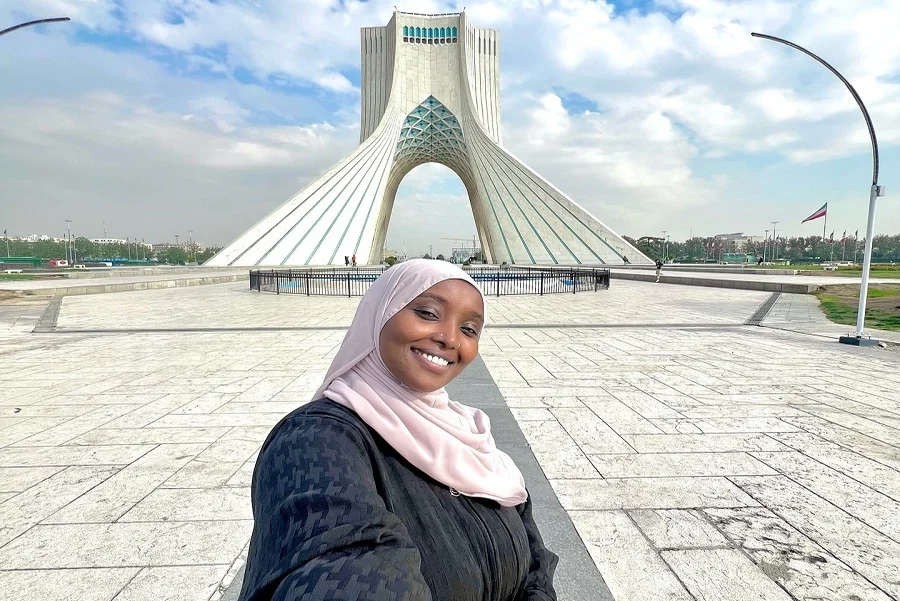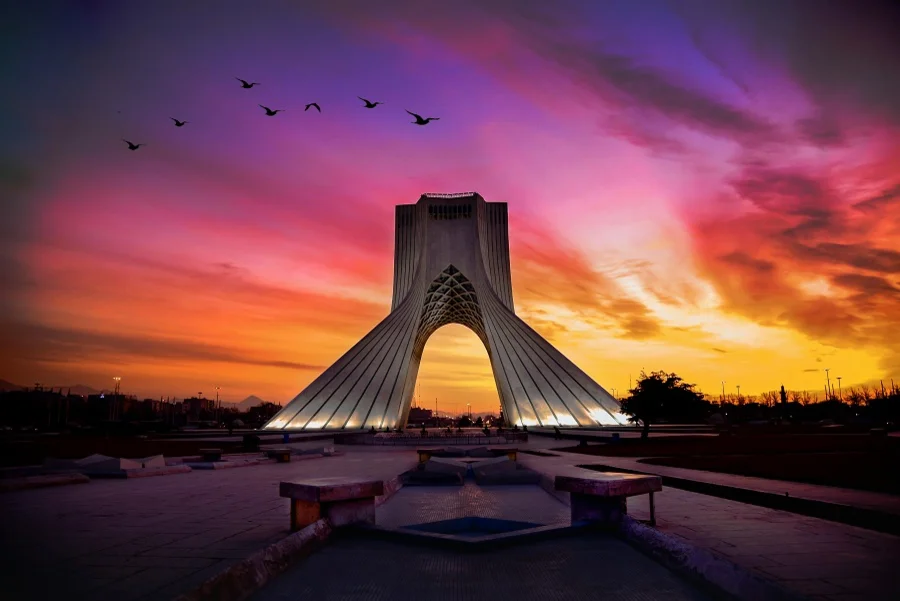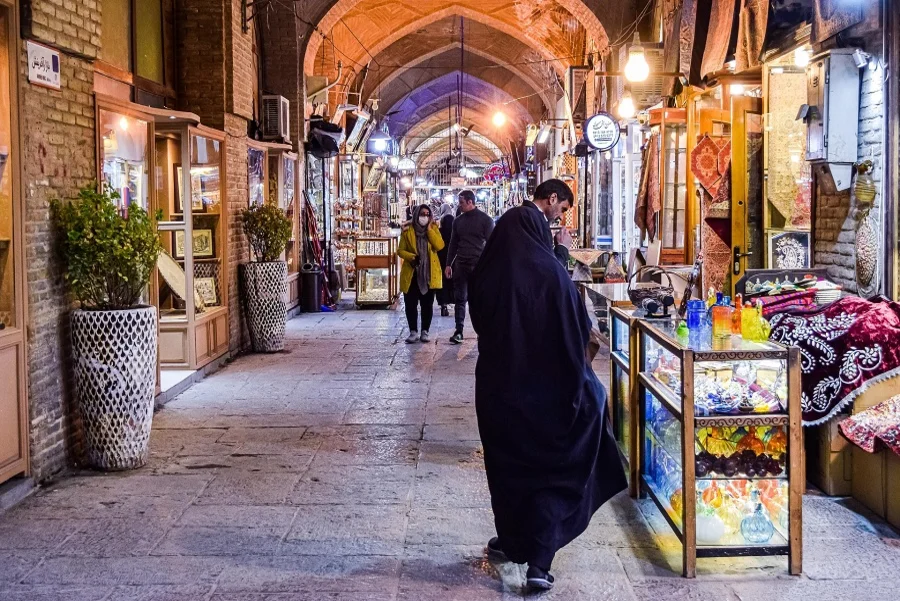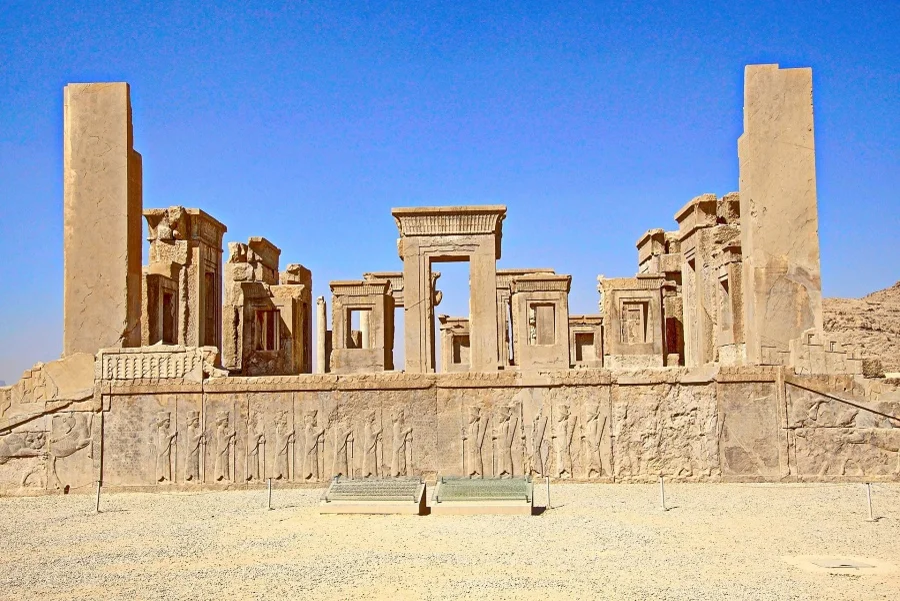
Can Americans travel to Iran?
For Americans visiting Iran, the U.S. Department of State advises against travel. However, at Tours of Iran, we are dedicated to keeping you safe throughout your journey.
More and more Americans are setting out to discover new cultures and exciting destinations. Iran, with its rich history, gorgeous landscapes, and famously welcoming people, is becoming a top pick for adventurous travelers. If you’re thinking about visiting, you might be wondering: Can U.S. citizens travel to Iran?
The political history between the U.S. and Iran may be complex, but when it comes to travel, it’s all about the experience, not the politics. In this guide, we’ll walk you through everything you need to know as an American planning a trip to Iran—visa requirements, safety tips, cultural insights, and practical details. Our goal? To give you the confidence and knowledge to make informed travel plans. So, let’s dive in and answer the big question: Can you travel to Iran from the USA?
Iran: Where History, Culture, and Geography Meet
Situated in the Middle East, Iran boasts a rich history and culture. From the snow-capped peaks of the Alborz Mountains to the awe-inspiring deserts of Dasht-e Kavir and Dasht-e Lut, Iran offers endless natural beauty. Its culture, shaped by the grandeur of the Persian Empire, the brilliance of the Islamic Golden Age, and a deep artistic legacy, is nothing short of captivating. Whether you’re exploring stunning architecture, savoring flavorful cuisine, or diving into centuries of history and traditions, Iran promises an unforgettable journey.
Unforgettable Attractions and Must-See Experiences
Iran is a must-visit for its one-of-a-kind attractions. The country is home to several UNESCO World Heritage sites, like the ancient ruins of Persepolis, Isfahan’s breathtaking Imam Mosque, and Tehran’s beautiful Golestan Palace. Nature lovers can explore the stunning Badab-e Surt terraces or relax along the serene shores of the Caspian Sea. Plus, Iran’s famous hospitality offers travelers the chance to connect with locals and experience their culture firsthand.
Understanding the Political Climate and Travel Warnings
Before planning your trip to Iran, it’s important to be aware of the current political climate. Recent tensions in US-Iran relations have resulted in travel advisories from the U.S. Department of State, offering key information on safety and potential risks. Be sure to review these advisories to stay informed and better understand the challenges you may face during your trip.

Your 2025 Iran Tour & Visa Guide for Americans: Easy Steps to Get Started
Planning a trip to Iran from the USA in 2025? Here’s a simple, step-by-step guide to help make your journey smooth and hassle-free.
- Choose an Iranian Travel Agency for Your Iran Tour
The journey starts with choosing a reputable Iranian tour company. This step is essential, as the right agency will guide you through the visa process and simplify your travel preparations.
- Submit the Required Visa Documents
After choosing a travel agency, the next step is to apply for your visa. You’ll need to submit the following documents:
- A scanned copy of your passport
- A recent passport-sized photo
- Your planned travel itinerary
- A completed visa application form
- A professional resume
Your travel agency will handle all the paperwork and submit it for you. Typically, this process takes about 45 business days to complete.
- Receive Your Visa
After the paperwork is processed, your tour company will receive an “Authorization Code” from Iran’s Ministry of Foreign Affairs, typically within two months. Once the code is issued, you’ll have two options to obtain your visa:
Option 1: If you’re in Washington, DC:
- Head to the “Iranian Interests Section” located within the Pakistan Embassy.
- Submit your passport for visa processing, which typically takes about four days.
- Go back to the same office to pick up your passport with the visa.
Option 2:If you’re outside of Washington, DC:
- Mail your documents, including your Authorization Code, directly to the Iranian Interests Section for processing.
By following these simple steps, you’ll be ready to experience the beauty and culture of Iran in 2025. Safe travels!

Is It Possible for Americans to Travel to Iran Without a Tour?
US citizens are required to visit Iran as part of an organized tour or with a private guide. Independent travel without a tour is not permitted for Americans. This policy is designed to ensure the safety and security of visitors while enabling the Iranian government to oversee tourist activities. If you’re a U.S. citizen planning a trip to Iran, you’ll need to book through an authorized tour operator or a travel agency specializing in Iranian travel.
Note: Always keep your American passport, visa, and other essential travel documents with you during your visit to Iran.
Is Iran Safe to Visit in 2025?
Safety concerns are natural when planning a trip to Iran as an American, but it’s important to distinguish between misconceptions and reality. Despite the geopolitical context, Iran is generally a safe destination for travelers. Iranians are renowned for their hospitality and kindness, creating a warm and secure atmosphere. To ensure a smooth journey, always rely on up-to-date information from trusted sources, such as travel advisories and embassy notifications.
No matter where you’re traveling, it’s important to stay safe by following these basic precautions:
- Stay informed by regularly checking travel advisories and official guidance.
- Learn about local laws, cultural norms, and customs to avoid misunderstandings or unintentional offenses.
- Be cautious with your belongings, especially in busy areas or tourist spots. Consider using a money belt or a secure bag to protect against pickpockets.
- Keep essential contact numbers, including your embassy or consulate, easily accessible, and stay in touch with family and friends back home.
- Stay aware in public spaces, particularly in crowded areas or on public transport.
- Use reliable, licensed transportation services, and avoid traveling alone at night in unfamiliar areas.
While Iran is generally safe, some regions near the borders with Afghanistan, Iraq, and Pakistan may require extra caution. Always check the latest travel advisories and consult local authorities to assess the situation in these areas before finalizing your itinerary. Staying informed and cautious in these regions will help minimize potential risks.

Understanding Cultural Etiquette and Customs in Iran
Iran has a rich cultural heritage, with unique customs and traditions that make the travel experience even more rewarding. Iranians are known for their warmth and hospitality, and they take great pride in their culture. Key cultural values include strong family ties, respect for elders, and an emphasis on hospitality. Traditional arts, poetry, music, and cuisine are also central to Iranian life, offering visitors a deep connection to the country’s history and people.
When visiting Iran, keep these important guidelines in mind:
Dress modestly to respect Iran’s cultural and religious standards. Women should wear loose-fitting, non-revealing clothing that covers their arms, legs, and hair. Men should also dress modestly, avoiding shorts and sleeveless shirts.
Avoid public displays of affection, such as hugging or kissing, as they are considered inappropriate in Iran.
Embrace polite gestures, such as greeting with a handshake, offering compliments, and showing genuine interest in Iranian culture and traditions.
Be mindful of interactions between genders in public spaces. Refrain from physical contact and keep a respectful distance.
Always ask for permission before taking photos of people or sacred sites, and be mindful of any photography restrictions.

Top Tourist Destinations in Iran
Iran offers a wide variety of tourist attractions to suit all interests. Some of the top highlights include:
Tehran, the capital of Iran, beautifully blends modernity with tradition. Explore the historic Golestan Palace, the fascinating National Museum of Iran, and the lively Grand Bazaar to immerse yourself in the city’s rich history and vibrant culture.
Isfahan is renowned for its breathtaking architecture, featuring iconic landmarks like the Imam Mosque, Sheikh Lotfollah Mosque, and the magnificent Naqsh-e Jahan Square. Wander through its picturesque bridges and vibrant bazaars to experience the city’s timeless charm.
Discover Shiraz, a city of poetry and gardens. Explore the beautiful Nasir al-Mulk Mosque, marvel at the ancient ruins of Persepolis, and find tranquility in the serene Eram Garden.
In Yazd, step into the enchanting desert city with its winding old town, windcatchers, and mud-brick structures. Visit the Jameh Mosque, explore the Zoroastrian Fire Temple, and uncover the ingenious Qanats water system.
Persepolis: Near Shiraz, the ancient city of Persepolis is a UNESCO World Heritage site and a testament to the grandeur of the Persian Empire.
While most tourist sites in Iran are open to visitors, some may have specific requirements or restrictions, such as limited access or the need for a guide. It’s important to check the latest guidelines, especially during peak seasons like Nowruz (Persian New Year).
Practical Information for Americans Traveling to Iran
In Iran, you’ll find a variety of transportation options to suit your needs. Domestic flights are a quick and efficient way to cover long distances, especially between major cities. Buses and trains offer budget-friendly travel between cities and regions. However, English-speaking travelers may find the public transportation system challenging, so it’s a good idea to learn some basic Persian phrases or consider traveling with a guide.
Additional Tips for Americans Traveling to Iran
Handling money: Iran’s currency is the Iranian Rial (IRR). While international credit and debit cards aren’t widely accepted, ATMs in major cities allow cash withdrawals. Carry enough cash for smaller establishments and remote areas.
Communication: Wi-Fi is prevalent in hotels, cafes, and public spaces. Use translation apps or pocket-sized English-Persian phrasebooks for basic communication with locals.
Dress code: Adhere to the modest dress code. Women should cover their arms, legs, and hair, while men are expected to dress modestly. Scarves or head coverings for women are necessary in public areas.
Time zone: Iran operates on Iran Standard Time (IRST), which is UTC+3:30. Set your watches to the local time and plan your activities accordingly.
Health and safety: Consult your healthcare provider for necessary vaccinations or health precautions. Have comprehensive travel insurance to cover unforeseen medical expenses or emergencies.
Electrical considerations: Iran uses 220V electrical systems with Type C and Type F sockets. Carry plug adapters and voltage converters if they are necessary.
Final words
We encourage you to consider visiting Iran and experiencing its rich culture and history firsthand. Iran’s hospitality, architectural wonders, and historical legacy offer a captivating journey. Approach your trip with an open mind, respect for local customs, and a willingness to engage with Iranians to create lasting memories and gain a deeper understanding of this remarkable nation. So, if you’re an American traveler seeking a unique adventure, consider adding Iran to your travel bucket list.

